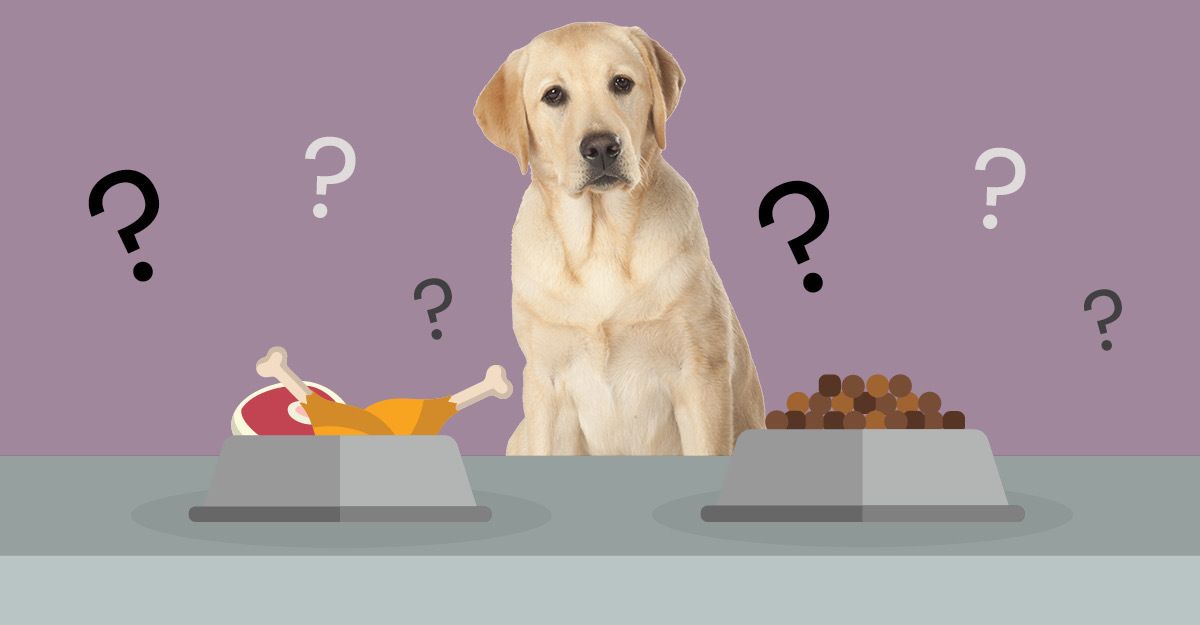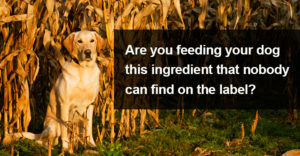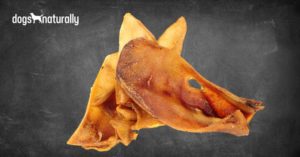There are a bunch of reasons to feed both kibble and raw at the same time …
Maybe you’re trying to switch your dog to raw but you need to mix both together to avoid digestive upset. Or maybe a 100% raw diet isn’t in your budget … you give as much as you can afford, but you need to add a little kibble to make ends meet.
These are both really solid reasons to combine the two foods. And let’s face it … a little bit of fresh, whole food is better than none at all!
But mixing these two foods together can set your dog up for some unhappy (and even dangerous) consequences.
Fortunately, you can limit the downside with just a few tweaks … but the potential health risks are real and you should be aware of the risks and how to reduce them.
So let’s talk about the dangers of combining kibble and raw and the easy steps you can take to give your dog the health benefits of some raw food without any risk …
How Your Dog Digests Food
Inside your dog’s digestive tract are little proteins called enzymes – these enzymes are responsible for digesting the food your dog eats so it can be converted to energy. Protein will also be used to build structures in the body while fat will be used to build the walls of your dog’s cells.
Carbohydrates have no function in the body other than supplying energy.
Some digestive enzymes are found in the stomach, where food is predigested, and the rest of the enzymes are released from your dog’s pancreas … these pancreatic enzymes are released into the small intestine, where they complete the digestion process.
The dog’s stomach doesn’t just digest food … it also protects your dog from bacteria or other harmful organisms that might be eaten along with his food. And it does both of these jobs by secreting hydrochloric acid from its walls … this keeps the pH of the stomach around 2, which is very acidic (about the same pH of vinegar).
And the acids in your dog’s stomach also play one more important role …
How Acid Digests Bone
Here’s a cool experiment to try at home … take a bone (try a chicken leg bone) and place it in a bowl of vinegar. Let the bone sit in the vinegar for 2 to 3 days and then take the bone out. What you’ll find is that you can easily bend the bone, just like it was rubber.
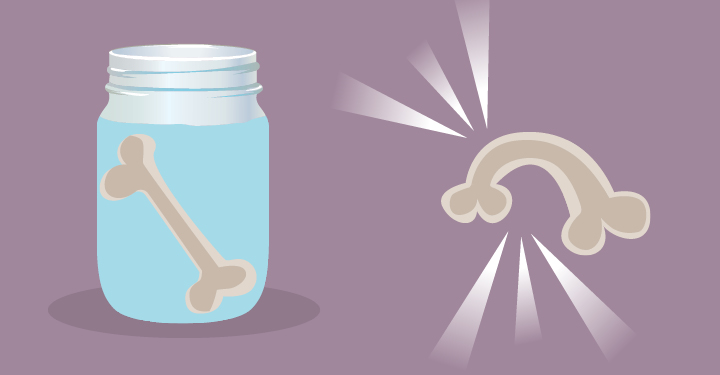
Bones turn to rubber in vinegar because the acid dissolves the calcium (and other minerals) from the bone. Once the calcium is gone, the bone loses its hardness.
So that acidic stomach and intestinal tract helps your dog digest bone (and absorb all of the important minerals in his diet).
So, to summarize, the acids in your dog’s digestive tract:
- Release enzymes in the stomach to predigest the food
- Inhibiting the growth of dangerous bacteria
- Release enzymes from the pancreas for further digestion
- Absorb minerals from your dog’s meal (like calcium, magnesium, zinc and manganese)
Now if you plan on mixing raw food with kibble, this changes.
How Starch (From Kibble) Alters Digestion
One of the main differences between kibble and raw food is the amount of starch (or carbohydrate) they contain. While most raw foods contain 0 to 15% carbohydrate (with none of it starch), kibbles need starch to hold them together in those little kibble forms. In fact, they need to be at least 30% starch for this to happen … and many kibbles are even 60% starch.
And if you’re feeding a grain-free kibble, don’t be fooled … those foods still need starch and it will just be in a different form. So instead of rice or corn, they’ll contain the same amount of peas or potatoes. Even grain-free foods are very high in starch.
Now there are a whole lot of problems with feeding your dog this large amount of starch, but the one I want to focus on today is how it changes how your dog digests food. And it does this in a number of ways:
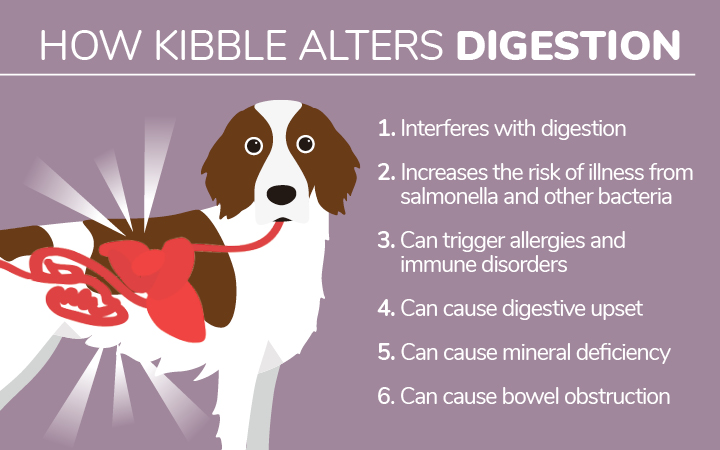
Kibble Changes Gut pH
Kibble (or the starch it contains) will increase the pH of the stomach.
The same would happen if you fed your raw meals with sweet potatoes or other starchy foods. The enzyme called pepsin is responsible for breaking the protein in your dog’s meal into its individual building blocks, amino acids. But pepsin is only released if the pH is below 2, so the predigestion of protein can’t happen in the stomach.
When the pH of the gut is increased (less acidic), then pathogenic bacteria like E coli and salmonella are more likely to survive and cause digestive upset or illness in your dog.
Remember, the acidic environment in his gut protects your dog against these pathogens.
Dogs and other carnivores have evolved to handle the bacteria in raw meats … but if we change the pH in their digestive tract by feeding a food that’s not appropriate for them (starch), some of that protection is lost.
Once the predigested food leaves the stomach, it needs to be at the proper pH to trigger the release of the pancreatic enzymes that do most of the digesting.
If there’s starch in the meal, the higher pH means fewer of those enzymes will be released and undigested food particles can trigger inflammation and an immune response called leaky gut syndrome. Leaky gut can allow undigested food and bacteria to pass through the wall of the small intestine, where they enter the body and cause immune disorders.
And if your dog suffers from yeasty ears or yeast infections, Candida thrives on the more alkaline pH that comes with starch.
If undigested food enters the colon, the last stop in the digestive tract, it can disrupt the friendly bacteria that live there and cause inflammation … which can cause diarrhea and irritable bowel syndrome.
And finally, and most importantly, if the stomach isn’t acidic, the bone your dog eats won’t be properly digested … and this will cause two problems:
- Your dog won’t be able to absorb all of the minerals he needs from the bone
- Your dog is at greater risk for bowel obstruction because his digestive tract can’t make the bones soft and rubbery, like the bone in the bowl of vinegar.
This is why mixing raw and kibble together puts your dog at increased risk for several health issues.
Now if this worries you and you’re ready to throw out the raw … don’t! I’ve got some easy and inexpensive solutions to make mixing kibble and raw safer …
RELATED: Could Your Raw Fed Dog Be Lacking Important Vitamins and Minerals?
Make Kibble And Raw Combinations Safer
In a nutshell, all of the risk your dog faces when eating raw foods and starch are the result of the changes to the pH. If you can control the pH, you can do a better job of transitioning your dog to a raw diet without diarrhea, vomiting or obstruction.
And if you want to feed him both kinds of foods, it will reduce his risk of getting sick from bacteria or getting undigested bone lodged in his digestive tract … and it will help him get more nutrition out of his meals and avoid the inflammatory and immune responses that can come with undigested foods.
Here are two simple ways to make mixing kibble with raw safer:
Probiotics
Adding probiotics to your dog’s meals will help crowd out the harmful, pathogenic bacteria like E. coli, salmonella, listeria and campylobacter. And salmonella activity can be inhibited friendly bacteria.
Probiotics can also help because the friendly bacteria assist in the production of digestive enzymes, which can improve digestion.
So adding probiotics to your dog’s meals will help reduce the risk of combining kibble and raw.
RELATED: When probiotics help and when they harm …
Apple Cider Vinegar
Organic apple cider vinegar can also help lower the pH in the gut. This will make the food safer and allow your dog to absorb more important minerals from it.
In fact, vinegar has the same pH as your dog’s gut when he’s fed raw and, like his gut, vinegar can kill 80-99% of the harmful bacteria in his food.
Just add a tsp to Tbsp apple cider vinegar for every 50 pounds of body weight.
And if you’re switching from kibble to raw, here’s one extra tip …
Bones And Switching To Raw
If you’re switching your dog to a raw diet, you might want to wait a week to 10 days to add bone … it can take several days for your dog’s pH to adjust to his new diet.
Protein in the diet is what mainly influences the pH in your dog’s gut, so give him some time to adjust to his new protein-rich diet before adding meaty bones.
If you feed bones while the pH is still high, there’s more potential for blockage.
You’ll have a whole lifetime to switch your dog to 100% raw, so for extra safety, just wait a bit before adding bone.
You can just feed meats for the first week or, if you have a puppy, feed a complete pre-made diet complete with calcium for a week or two before adding bone to the diet. That way you’ll know your dog (and especially your puppy) is getting all the nutrients (and safety) he deserves.
So this isn’t meant to frighten you away from the raw diet … fresh, whole foods in their raw form carry so many important benefits for your dog, I wouldn’t want him to miss out on any raw foods you can give him.
But hopefully with these simple tips, it will just add a little more safety to the diet (and save your rugs from potential accidents).

